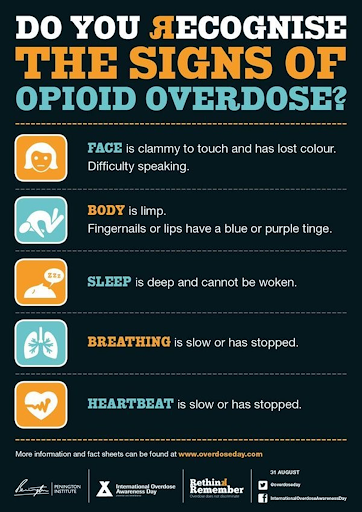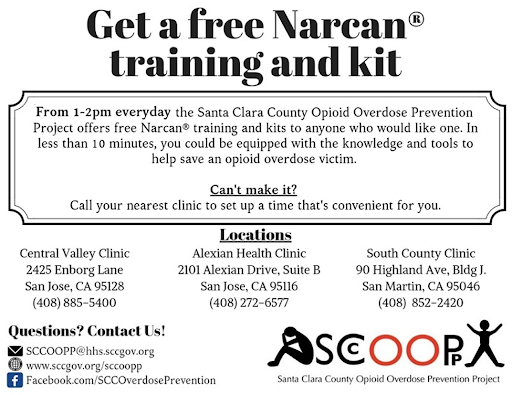Business Services
Page Navigation
If you think someone is overdosing, call 911 immediately.
Opioid overdose awareness
-
The Opioid epidemic is a serious national crisis affecting public health and social and economic welfare. *In 2019, the misuse and addiction to opioids, including prescription pain relievers and heroin and synthetic opioids such as fentanyl, claimed the lives of almost 50,000 people.
The following informs educators and parents about opioid use, and signs of overdose and provides information about available effective treatment that can save lives.
*Source: National Institute on Drug Abuse
What is Fentanyl?
-
Fentanyl is a powerful opioid, like heroin or morphine, but 50 - 100 times stronger. It is a prescription pain killer used to treat severe pain, especially after surgery. Fentanyl has recently been in the news because of overdose deaths linked to people unknowingly taking dangerous amounts that were mixed with other drugs or medication. This is causing overdose deaths in Santa Clara County and throughout the country.
What is Naloxone (Narcan®)
-
Naloxone (also known by its brand name, Narcan®) is an opioid antagonist that can reverse the effects of an opioid overdose. It is usually available as a nasal or injectable medication and works by outcompeting opioids and binding on to the opioid receptor, alleviating the sedating effects of the opioid. When given during an overdose, Naloxone could restore breathing within 2-8 minutes.
California state regulations permit pharmacists to prescribe Naloxone without a prescription in accordance with the Title 16 California Code of Regulations Section 1746.3.
CDPH has issued a statewide standing order to help reduce morbidity and mortality associated with opioid overdose by facilitating the distribution and administration of Naloxone Hydrochloride (Naloxone) in California.
Naloxone available on MetroED campus
-
Naloxone is available, to be administered by trained staff, in an emergency. Training included the recognition of overdose, response, and administration of Naloxone.
Additional information for students, staff and the community includes:
-
Santa Clara County Office of Education Naloxone Training Resource Guide
-
CA Department of Public Health (CDPH) Naloxone Training Video (11-minutes)
-
A six-point checklist on how to recognize when a person is overdosing and demonstrates how to dispense naloxone and provide post-overdose care
-
-



